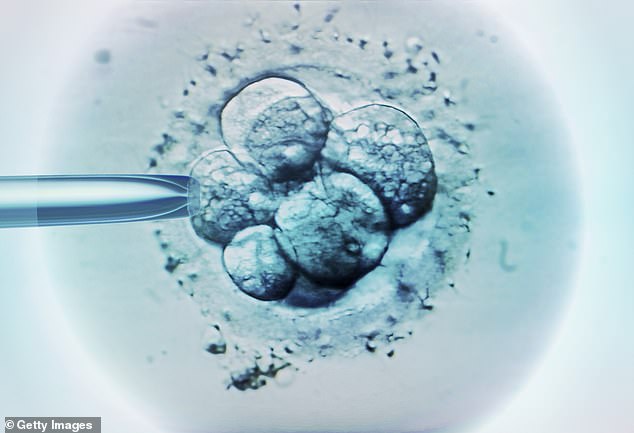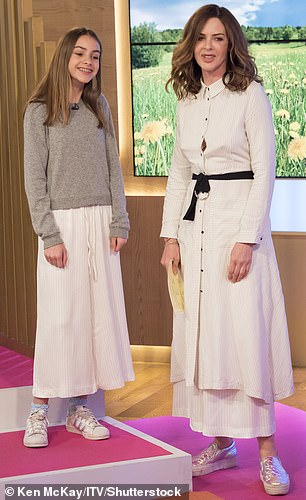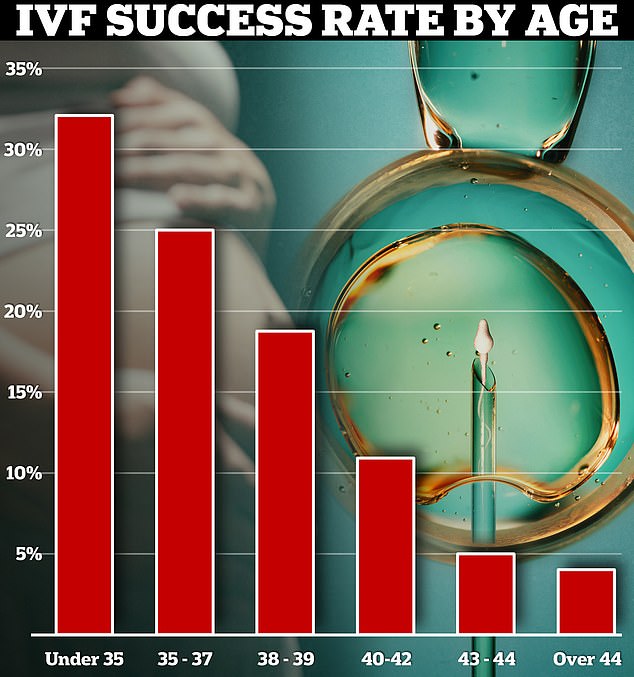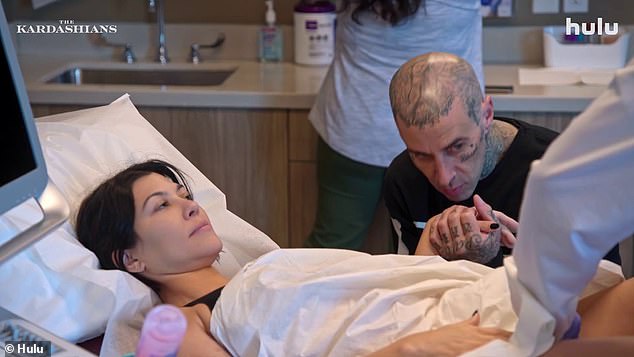Fashion guru Trinny Woodall claims going through 16 rounds of IVF sent her through early menopause aged just 43 that robbed her of her ‘mojo’
What Not To Wear star Trinny Woodall has opened up about how she believes going through 16 rounds of IVF caused her early menopause.
The fashion guru, 59, gave birth to daughter Lyla through fertility treatment in 2003 after struggling to conceive.
Shortly afterwards, and still in her early forties, Trinny felt like her “mojo was gone.”
Trinny, who rose to fame in the early 2000s alongside fellow style icon and TV co-host Susannah Constantine, told The Shift podcast that she was offered antidepressants after seeing “a lot” of medics.
However, she claims that Dr. Erika Schwartz, author of The Hormone Solution, later told her that she had actually undergone early menopause caused by IVF, with each round supposedly shaving a year off her cycle.
But leading experts insist there is ‘no evidence’ that fertility treatments can cause early menopause.
About one in twenty women will experience early menopause, when menstruation stops before the age of 45. For the majority, the cause is unknown.

Trinny Woodall has claimed that undergoing more than a dozen fertility treatments caused early menopause

The fashion guru, 59, told The Shift podcast that she underwent 16 rounds of in vitro fertilization (IVF) before having her daughter Lyla in 2003.
Trinny, founder of makeup and skincare brand Trinny London, told the podcast: “I read this book called The Hormone Solution that she (Dr. Schwartz) wrote.
“And I went to her in New York and she just set it up for me.
‘She said, “You’ve done 16 rounds of IVF, that’s about 16 years of your cycle because every time you do a round of IVF you produce 10-12 eggs and that’s what you produce in a year”.
‘That was never told. I wouldn’t have given as much for having Lyla.
“But it was interesting that my mom went in at 57 and I was there at 43, so I’m very focused on it.”
Trinny said she only had “some symptoms” of early menopause, but she didn’t recognize them right away.
In addition to menstruation becoming irregular or stopping altogether, hot flashes, night sweats, and vaginal dryness are telltale signs, along with sleep problems, low mood, and a decreased sex drive.
It can be diagnosed by a GP based on symptoms, family history and a blood test to check hormone levels.
Treatments include the combined contraceptive pill or hormone replacement therapy (HRT) to replace missing hormones.

Fertility drugs – called follicle-stimulating hormone (FSH) – work to save these eggs. They stimulate the follicles the body has already produced so that more can mature, be collected and fertilized. With more fertilized eggs, a clinic has a greater choice of which embryos to use in treatment. In the photo: embryo selection for IVF


The fashion guru, 59, told The Shift podcast that she underwent 16 rounds of in vitro fertilization (IVF) before having her daughter Lyla in 2003 (pictured)

About a third of IVF cycles among people over 35 resulted in a live birth in 2019. Yet this fell to just 4 percent among those over 44

Kourtney Kardashian (left) claimed her attempts to conceive a baby via IVF ‘put her into menopause’ as she tried to have a child with husband Travis Barker (right)
Trinny said menopause can be “incredibly debilitating” and that she will do “anything” to alleviate her symptoms.
‘I do all the general hormone treatments, but I stimulate my brain, I do meditation and I do strength training four times a week. “I really want to take care of my body so that it can take care of me,” she added.
Some women may experience hot flashes, joint pain, and vaginal dryness long after their periods have ended.
Kourtney Kardashian similarly claimed on an episode of Hulu’s The Kardashians that medication she was taking for IVF put her into early menopause.
However, experts have long dismissed the idea that IVF or other fertility treatments can cause early menopause.
Those who promote this theory claim that drugs used during the process force the ovaries to release about a dozen eggs at a time, instead of the ones normally released during ovulation. As a result, the body can run out of eggs prematurely, they claim.
But doctors warn that this theory is completely wrong.
Instead, women produce 10 to 20 egg sacs each month. Over the course of a menstrual cycle, one or two follicles will fully mature and be released by the body, while the rest of the immature eggs die.
Fertility drugs – called follicle-stimulating hormone (FSH) – work to save these eggs. They stimulate the follicles the body has already produced so that more can mature, be collected and fertilized. With more fertilized eggs, a clinic has a greater choice of which embryos to use in treatment.
This process does not reduce a woman’s number of eggs. Women are born with about 2 million eggs and have a few thousand left when they enter menopause.
Rather than IVF or fertility treatment, early menopause can be caused by premature ovarian failure – when the ovaries stop making normal levels of certain hormones. Cancer treatments and surgery to remove the ovaries are also known causes.
Professor Tim Child, chair of the Human Fertilization and Embryology Authority’s Advisory Committee on Scientific and Clinical Advances, said: ‘There is no evidence that IVF advances menopause.
‘This is because women are born with approximately two million eggs and even during menopause there are still a thousand to two thousand eggs left.
‘The reduction in the number of eggs during a woman’s life is mainly due to the degeneration of the eggs rather than ovulation.’
